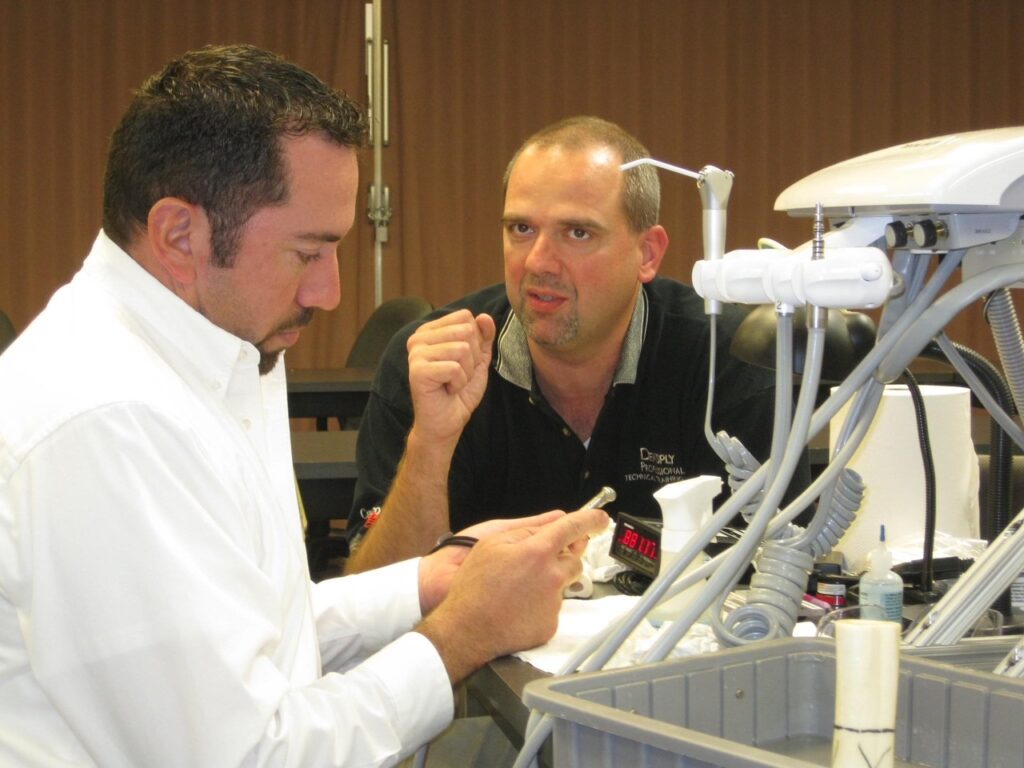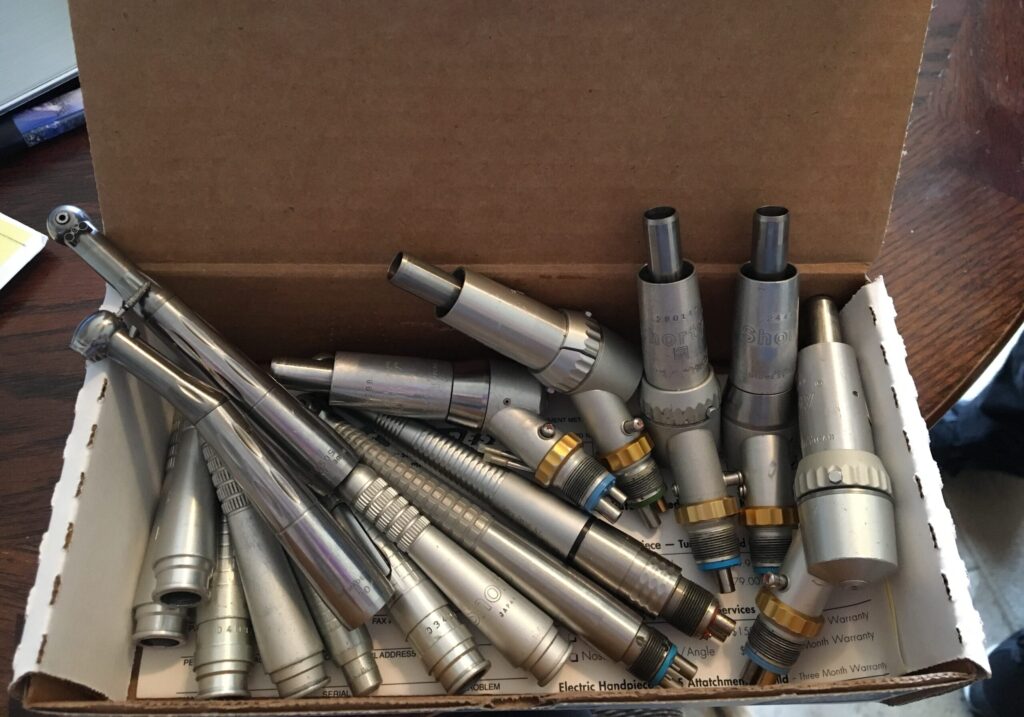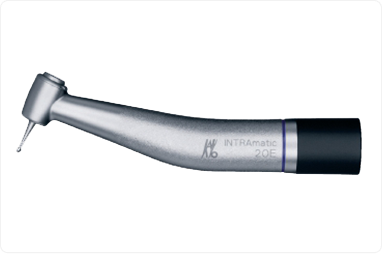The Importance of Regular Handpiece Sterilization and Lubrication
In a world where dental practices are held to the highest standards of hygiene and efficiency, the dental handpiece emerges as one of the most critical tools in any dental office. Often seen as the workhorse of dental procedures, its performance directly affects patient care and procedural outcomes. Yet, behind its seamless functionality lies an intricate dance of handpiece sterilization and lubrication, crucial for maintaining its precision and safety. So, why are these maintenance practices so vital, and what happens if they’re neglected?
The Role of Sterilization in Infection Control
Regular sterilization of dental handpieces is a cornerstone of effective infection control within dental practices. These tools are directly involved in patient care, often coming into contact with saliva, blood, and other bodily fluids, which can harbor pathogens. Inadequate sterilization can lead to cross-contamination, posing significant health risks to both patients and dental staff. By implementing stringent sterilization protocols, dental practices can mitigate these risks, ensuring a safe and hygienic environment for all. Proper sterilization not only helps in eliminating harmful microorganisms but also reinforces the trust patients place in their healthcare providers, knowing they are receiving care in a safe setting.
In addition to eliminating pathogens, regular maintenance of dental handpieces extends the life of the equipment, ensuring its optimal performance. Well-maintained tools operate more efficiently, reducing the likelihood of malfunctions that could potentially compromise patient care. Moreover, adhering to strict hygiene protocols promotes a culture of safety and professionalism within the practice, highlighting a commitment to patient welfare. This proactive approach to infection control is vital in preventing outbreaks and maintaining the overall health and well-being of both patients and dental staff. Ultimately, investing time and resources into regular sterilization and lubrication practices is an essential aspect of delivering high-quality, safe dental care.

The Impact of Lubrication on Handpiece Longevity
Regular lubrication of dental handpieces is essential for maintaining their longevity and optimal performance. Dental handpieces operate under high pressure and speed, which can lead to significant wear and tear over time. Lubrication plays a crucial role in minimizing friction between moving parts, thereby reducing the risk of damage and extending the lifespan of the equipment. By preventing overheating, lubrication ensures that handpieces operate smoothly and efficiently, reducing the likelihood of unexpected breakdowns during procedures. This not only enhances the reliability of the equipment but also contributes significantly to the continuity and quality of patient care.
Incorporating regular lubrication into maintenance routines offers notable cost-saving benefits for dental practices. By prolonging the functional life of handpieces, practices can avoid frequent costly repairs or premature replacements. This proactive approach to equipment maintenance translates into improved operational efficiency, allowing practitioners to focus more on delivering exceptional care rather than dealing with equipment issues. Efficiently working tools also foster a better working environment for the dental team, as they can perform procedures with confidence and precision. Ultimately, routine lubrication is not just an investment in the longevity of dental handpieces but also a strategic move toward enhancing the overall efficiency and effectiveness of dental practice operations.
Common Mistakes in Maintenance
Proper maintenance of dental handpieces is crucial, yet common mistakes in sterilization and lubrication can compromise their performance and longevity. One frequent error is insufficient sterilization, where tools are not cleaned thoroughly before sterilization, leaving behind debris that can harbor bacteria. This oversight not only risks cross-contamination but also diminishes the efficacy of the sterilization process. Another mistake is using incorrect sterilization techniques or settings that may damage the handpieces, affecting their functionality. To avoid these pitfalls, it is essential to adhere to manufacturer guidelines and ensure that all staff are trained in proper cleaning and sterilization procedures.
Lubrication errors also pose significant challenges. Over-lubrication can lead to residue build-up, causing the handpiece to operate inefficiently, while under-lubrication increases friction, accelerating wear and tear. Both scenarios can lead to premature equipment failure. Additionally, using inappropriate lubricant types can result in incompatibility with the handpiece materials, further exacerbating wear issues. To prevent these issues, it’s vital to follow the recommended lubrication schedules and use the correct type of lubricant as specified by the handpiece manufacturer. Regular audits of maintenance protocols and ongoing staff training can help ensure that dental handpieces remain in optimal condition, providing reliable performance and ensuring patient safety.

The Latest Techniques in Sterilization and Lubrication
Advancements in sterilization and lubrication techniques have significantly enhanced the maintenance of dental handpieces, ensuring both safety and longevity. New sterilization technologies, such as advanced autoclaves and chemical indicators, provide more efficient and reliable ways to eliminate pathogens, thereby reducing the risk of cross-contamination. These innovations allow for shorter sterilization cycles while maintaining effectiveness, thus maximizing the availability of handpieces for dental procedures. Additionally, modern lubrication systems now integrate automated processes that ensure precise application and distribution of lubricant, minimizing human error. This ensures that each component of the handpiece receives the necessary lubrication to function optimally, reducing wear and tear over time.
Keeping abreast of the latest sterilization and lubrication techniques is crucial for dental practices aiming to uphold high standards of patient care and equipment performance. These innovations not only enhance the safety and reliability of dental procedures but also contribute to the cost-effectiveness of practice operations by prolonging the lifespan of handpieces. Efficient maintenance processes mean less downtime for repairs and replacements, allowing dental professionals to focus on delivering quality care. By investing in training and updating maintenance protocols to include these new techniques, dental practices can ensure that their equipment is always in top condition, ultimately leading to improved patient outcomes and satisfaction.
The Cost Benefits of Regular Maintenance
Regular maintenance of dental handpieces, specifically through consistent sterilization and lubrication, offers substantial cost-saving benefits for dental practices. By ensuring that handpieces are properly maintained, practices can significantly reduce the frequency of handpiece repairs and replacements. Sterilization not only prevents potential cross-contamination but also preserves the integrity of the handpieces by removing harmful residues that can cause mechanical issues. Lubrication, on the other hand, minimizes friction and wear, preventing overheating and extending the lifespan of the equipment. These preventive measures contribute to longer-lasting handpieces, which ultimately means fewer expenditures on new equipment or costly emergency repairs, thus enhancing financial stability for the practice.
Beyond immediate savings, the long-term financial benefits of regular maintenance are profound. By investing time in proper sterilization and lubrication protocols, dental practices can ensure uninterrupted service delivery, thereby boosting overall practice efficiency. This operational consistency allows for a smoother workflow, enhancing the quality of patient care and increasing patient satisfaction. Moreover, the reliability of well-maintained equipment reduces downtime, allowing practitioners to accommodate more patients and expand their service offerings. In essence, regular maintenance not only safeguards the functional life of dental handpieces but also supports the economic health of the practice, creating a more sustainable and profitable business model while upholding high standards of patient care.

Expert Tips for Effective Handpiece Care
Proper care of dental handpieces is pivotal, and adopting handpiece repair mechanic practices ensures their longevity and optimal performance. One fundamental tip is to adhere to a meticulous cleaning routine before sterilization. This involves thoroughly removing debris and contaminants from the handpieces to prevent any obstruction in the sterilization process. Using cold water and mild detergent for initial cleaning can be effective, followed by drying the handpieces completely to avoid water damage. It’s crucial to employ sterilization methods that are compatible with the handpieces to avoid any potential damage, ensuring that they remain in prime condition for patient care. Moreover, regular inspections for visible wear and tear can help in identifying parts that may need repair or replacement.
Incorporating a systematic lubrication schedule is another essential aspect of handpiece maintenance. Proper lubrication prevents friction and overheating, which are common causes of mechanical failure. It is advisable to use lubricants specifically designed for dental handpieces to maintain their performance and integrity. Applying the correct amount of lubricant as recommended by the manufacturer can prevent residue build-up, ensuring smooth operation. Additionally, keeping a log of maintenance activities can help in tracking the frequency of sterilization and lubrication, assisting in the seamless scheduling of these tasks. By embedding these expert tips into daily practice routines, dental professionals can significantly enhance the efficiency and lifespan of their equipment, ensuring reliable service and superior patient satisfaction.
Conclusion
Regular sterilization and lubrication of dental handpieces are not just routine tasks—they are essential practices that ensure the safety, efficiency, and longevity of your equipment. By adopting comprehensive maintenance habits, dental professionals can provide top-notch care, protect their investments, and uphold the highest standards of hygiene and performance in their practices. Investing in these practices is investing in the success and reputation of your dental office.
https://www.google.com/maps?cid=5687140069355702096



